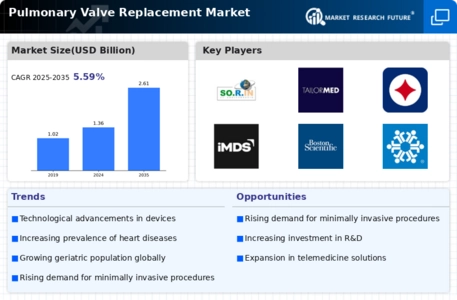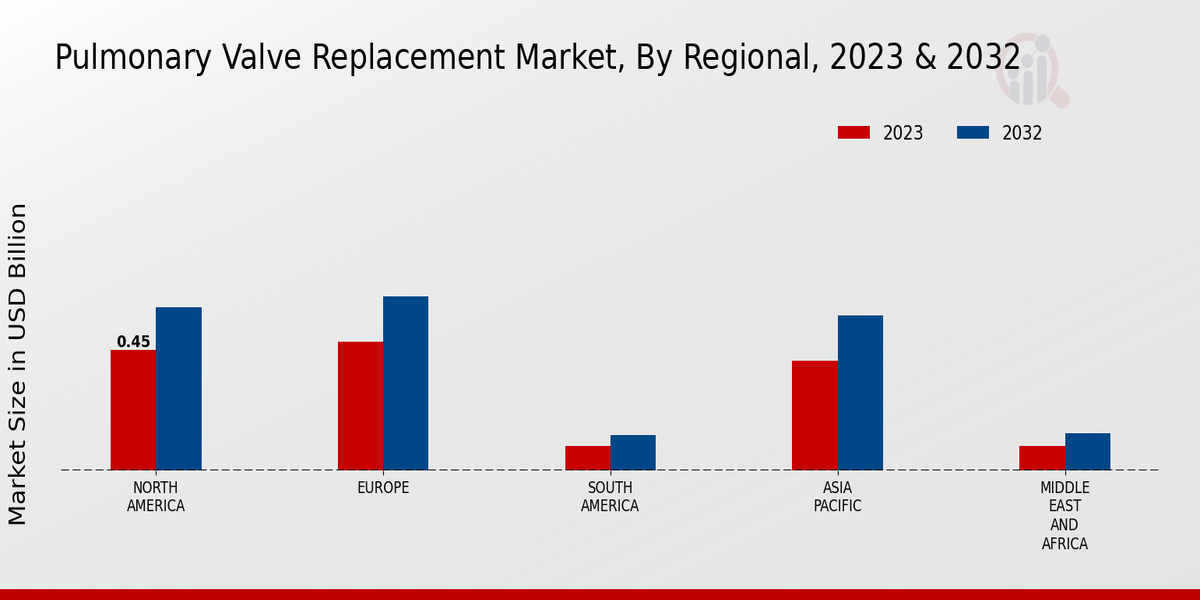Pulmonary Valve Replacement Market Summary
The Global Pulmonary Valve Replacement Market is projected to grow from 1.36 USD Billion in 2024 to 2.47 USD Billion by 2035.
Key Market Trends & Highlights
Pulmonary Valve Replacement Key Trends and Highlights
- The market is expected to witness a compound annual growth rate of 6.12 percent from 2025 to 2035.
- By 2035, the market valuation is anticipated to reach 2.61 USD Billion, indicating robust growth.
- in 2024, the market is valued at 1.36 USD Billion, reflecting a strong foundation for future expansion.
- Growing adoption of innovative valve technologies due to increasing prevalence of pulmonary valve disorders is a major market driver.
Market Size & Forecast
| 2024 Market Size | 1.36 (USD Billion) |
| 2035 Market Size | 2.47 (USD Billion) |
| CAGR (2025-2035) | 5.59% |
Major Players
Edwards Lifesciences Corporation, Medtronic plc, Terumo Corporation, Sorin Group, Biotronik SE Co. KG, TailorMed, MicroPort, IMDS, Getinge Group, Boston Scientific, Bracco Imaging, Abbott, CryoLife, Inc, LivaNova PLC


















Leave a Comment